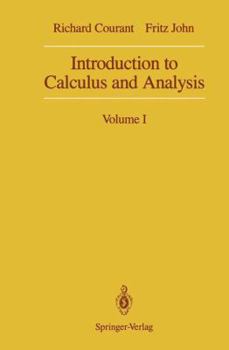Introduction to Calculus and Analysis, Vol. 1 (Classics in Mathematics)
Select Format
Select Condition 
Book Overview
From the Preface: (...) The book is addressed to students on various levels, to mathematicians, scientists, engineers. It does not pretend to make the subject easy by glossing over difficulties, but... This description may be from another edition of this product.
Format:Hardcover
Language:English
ISBN:0387971513
ISBN13:9780387971513
Release Date:January 1989
Publisher:Springer
Length:661 Pages
Weight:2.45 lbs.
Dimensions:9.8" x 1.3" x 6.5"












